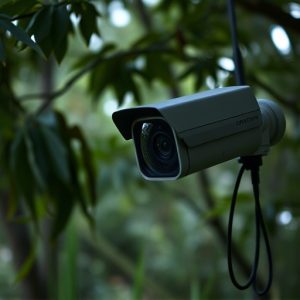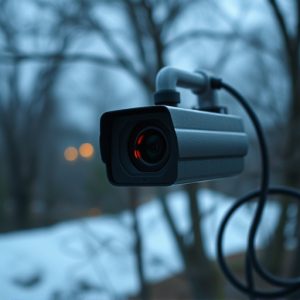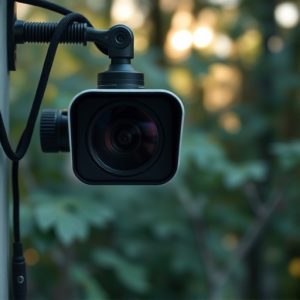Mastering Wireless Nanny Cam Signal Detection Without Internet
Electromagnetic signal understanding, particularly radio frequency (RF) and infrared (IR), is crucia…….
Electromagnetic signal understanding, particularly radio frequency (RF) and infrared (IR), is crucial for surveillance device detection, especially advanced wireless technologies like the Wireless Nanny Cam Without Internet Connection. To counter these cams, know signal strengths, bandwidths, and modulation techniques to employ methods like jamming or interference. When choosing a Wireless Nanny Cam, consider specific needs, environment, strong signals, durable design, motion detection, and real-time alerts for remote monitoring without internet reliance. Detection requires specialized signal detectors scanning common frequency bands (433 MHz, 900 MHz) with adjustable sensitivity settings for improved identification.
Surveillance devices, like wireless nanny cams without internet connection, rely on electromagnetic signals for transmission. Understanding these signals is key to effective monitoring. This article explores the intricate world of electromagnetic communications, highlighting their role in surveillance.
We’ll guide you through choosing the right wireless nanny cam, focusing on offline capabilities, and providing essential tips for detecting and enhancing surveillance device signals. Discover how to ensure a robust and discreet surveillance system.
- Understanding Electromagnetic Signals and Their Role in Detection
- Choosing the Right Wireless Nanny Cam Without Internet Connection
- Tips for Effective Surveillance Device Signal Detection
Understanding Electromagnetic Signals and Their Role in Detection
Electromagnetic signals play a pivotal role in surveillance device detection, especially with advancements in wireless technology. Understanding these signals is crucial for anyone looking to deploy or counter surveillance equipment like a Wireless Nanny Cam Without Internet Connection. These signals are integral to how such devices communicate and transmit data. From radio frequency (RF) to infrared (IR), each type of electromagnetic radiation has unique characteristics that can be harnessed or blocked to facilitate or prevent surveillance.
In the context of a Wireless Nanny Cam, detecting its presence often involves identifying specific frequencies and patterns. This is where knowledge about signal strengths, bandwidths, and modulation techniques becomes valuable. By understanding how these cameras emit and receive signals, users can employ countermeasures like signal jamming or interference to disrupt their operation, ensuring privacy in environments that require enhanced security.
Choosing the Right Wireless Nanny Cam Without Internet Connection
When selecting a Wireless Nanny Cam Without Internet Connection, the first consideration is understanding your needs and environment. Unlike internet-connected cameras, these devices transmit footage wirelessly within a local network, making them ideal for remote monitoring without ongoing data usage or an online connection. This autonomy is crucial for locations where internet access is unreliable or restricted, such as outdoor spaces, large properties, or settings with stringent privacy measures.
Choosing the right model involves assessing features like transmission range, battery life, motion detection capabilities, and storage options. Look for cameras with a robust wireless signal that can cover your desired area and a durable design suitable for the environment. Additionally, consider models offering real-time alerts via smartphone apps, allowing you to stay connected without needing an internet connection on the device itself.
Tips for Effective Surveillance Device Signal Detection
When it comes to detecting signals from surveillance devices, especially wireless nanny cams without an internet connection, understanding electromagnetic (EM) radiation is key. These devices emit signals within specific frequency ranges, often in the UHF or VHF bands. Using a signal detector designed to pick up these low-power EM signals can help you uncover hidden cameras. Look for devices with adjustable sensitivity settings to fine-tune your search based on the strength of the signal.
Another effective tip is to employ a sweep across various frequencies. Many surveillance cameras operate on fixed channels, so scanning through common bands used by such devices (like 433 MHz or 900 MHz) can reveal their presence. Additionally, ensuring you have line-of-sight access to the potential camera’s location increases your chances of detection. Blockages like walls or trees might hinder signal reception, making it harder to pinpoint the source.
In conclusion, detecting electromagnetic signals from surveillance devices, especially wireless nanny cams without an internet connection, requires a thoughtful approach. By understanding electromagnetic signals and their role in detection, you can effectively choose the right equipment and employ useful tips to enhance signal strength and clarity. This ensures reliable monitoring, offering peace of mind and security in various settings.


